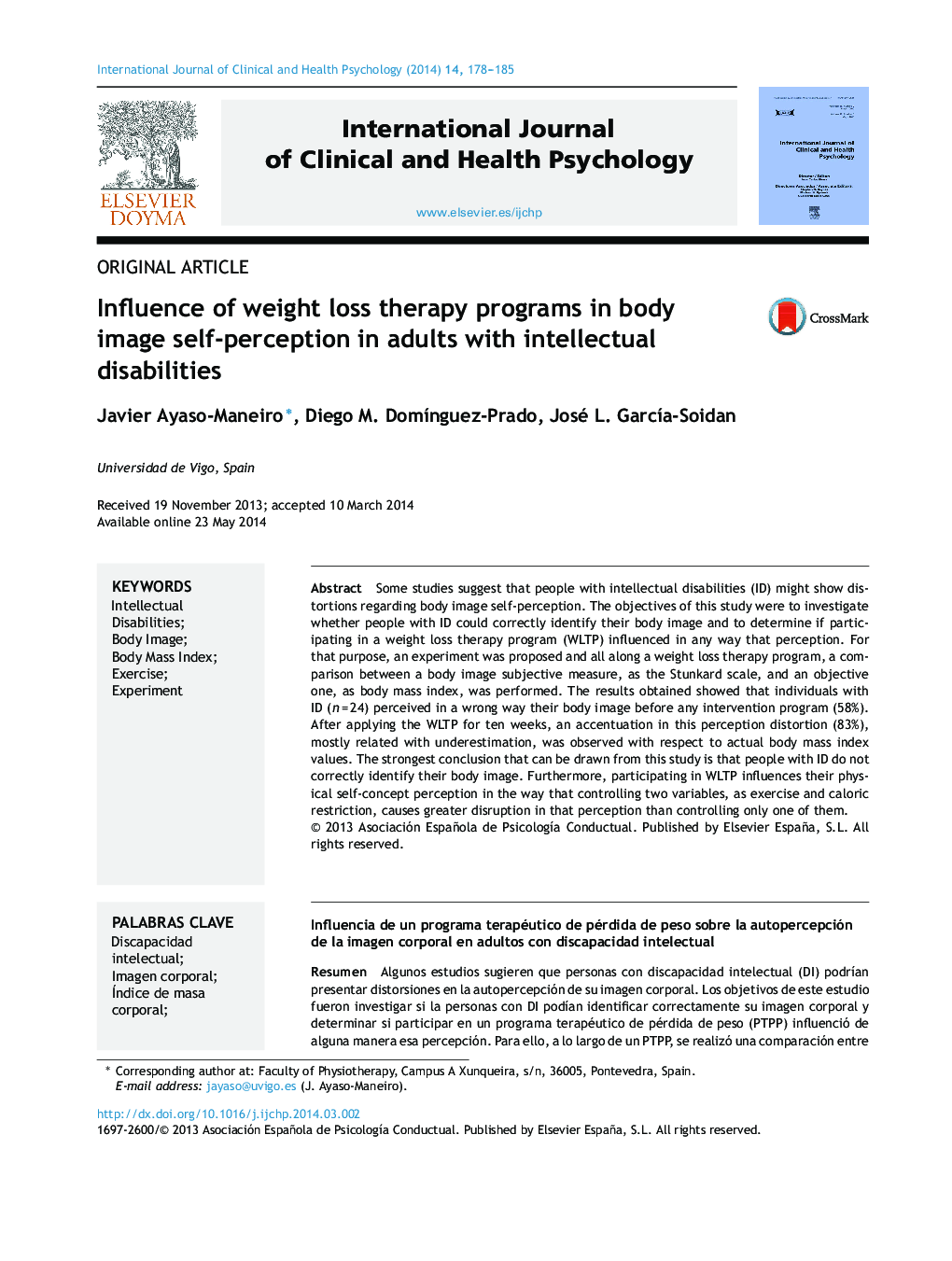| Article ID | Journal | Published Year | Pages | File Type |
|---|---|---|---|---|
| 879979 | International Journal of Clinical and Health Psychology | 2014 | 8 Pages |
Some studies suggest that people with intellectual disabilities (ID) might show distortions regarding body image self-perception. The objectives of this study were to investigate whether people with ID could correctly identify their body image and to determine if participating in a weight loss therapy program (WLTP) influenced in any way that perception. For that purpose, an experiment was proposed and all along a weight loss therapy program, a comparison between a body image subjective measure, as the Stunkard scale, and an objective one, as body mass index, was performed. The results obtained showed that individuals with ID (n = 24) perceived in a wrong way their body image before any intervention program (58%). After applying the WLTP for ten weeks, an accentuation in this perception distortion (83%), mostly related with underestimation, was observed with respect to actual body mass index values. The strongest conclusion that can be drawn from this study is that people with ID do not correctly identify their body image. Furthermore, participating in WLTP influences their physical self-concept perception in the way that controlling two variables, as exercise and caloric restriction, causes greater disruption in that perception than controlling only one of them.
ResumenAlgunos estudios sugieren que personas con discapacidad intelectual (DI) podrían presentar distorsiones en la autopercepción de su imagen corporal. Los objetivos de este estudio fueron investigar si la personas con DI podían identificar correctamente su imagen corporal y determinar si participar en un programa terapéutico de pérdida de peso (PTPP) influenció de alguna manera esa percepción. Para ello, a lo largo de un PTPP, se realizó una comparación entre una medida objetiva (IMC) y una medida subjetiva (escala de Stunkard) de imagen corporal. Los resultados mostraron que los individuos con DI (n = 24) percibieron de manera errónea su imagen corporal incluso antes de la realización de cualquier programa de intervención (58%). Después de aplicar el PTPP durante diez semanas se observó una acentuación de esta distorsión (83%) con respecto a los valores reales de IMC. La conclusión más importante que se puede sacar de este estudio es que las personas con DI no identifican correctamente su imagen corporal. Asimismo, la participación en PTPP tiene influencia en la imagen corporal, en el sentido de que el control de dos variables, como el ejercicio físico y la restricción calórica, causa una mayor distorsión que el control de solamente una de ellas.
